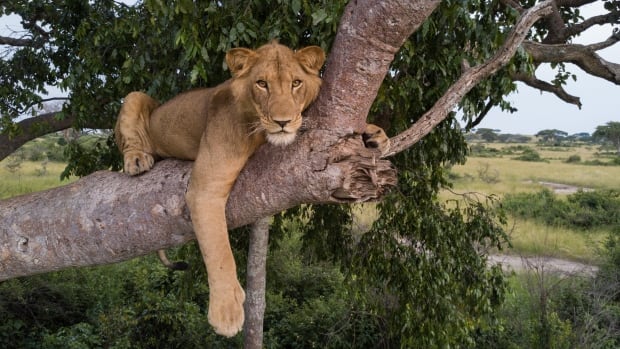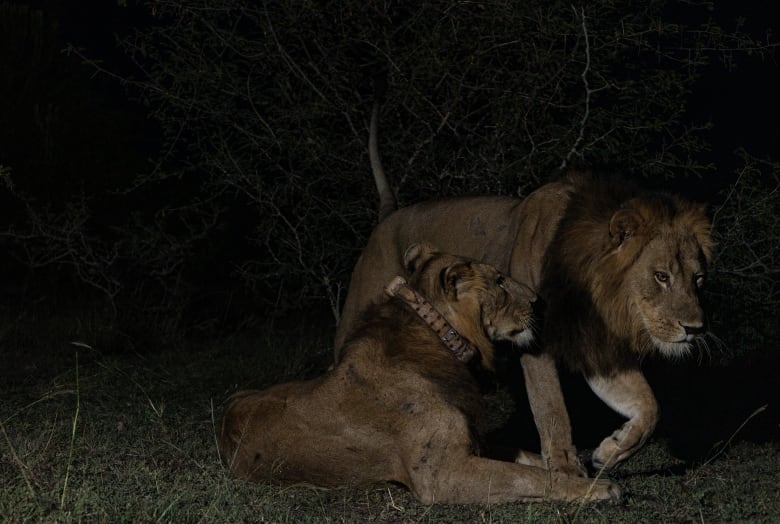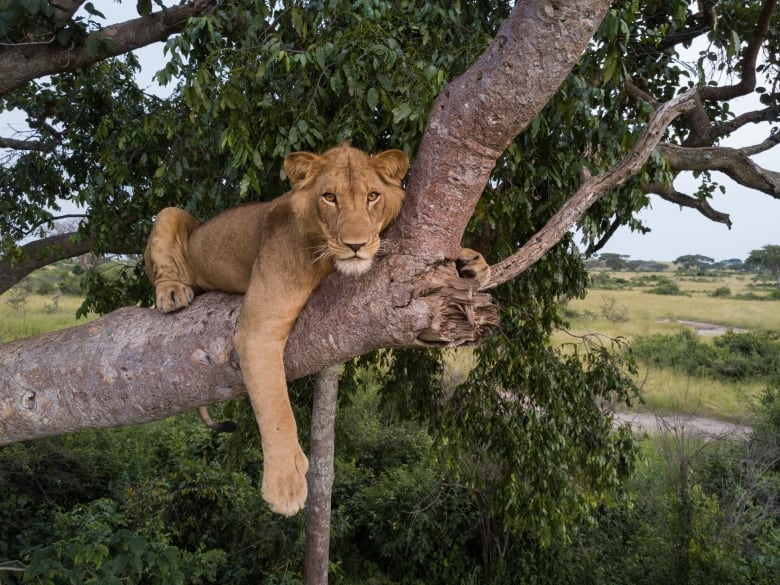
The Current10:22Meet Jacob, the lion with more than nine lives
Jacob the lion is just 10 years old, but he’s survived multiple traps, losing part of a leg, losing most of his family and now a potentially deadly swim across treacherous Ugandan waters in the search of love.
“Your best soap writer in Hollywood could not script something like this,” Alexander Braczkowski, a conservation biologist and wildlife photographer based in in Brisbane, Australia, told The Current guest host Duncan McCue.
Jacob’s latest feat was a swim through crocodile- and hippo-infested waters in Uganda’s Queen Elizabeth National Park, which Braczkowski believes is the longest swim by a lion on record.
Braczkowski watched Jacob and his brother, Tibu, try to cross the Kazinga Channel, which reaches a width of up to 32 kilometres.
Most lions only make it at most only a couple hundred metres before deciding to turn around, or worse, they’re killed.
“We couldn’t really believe our eyes when they got in there because we know that the Kazinga Channel is full of Nile crocodiles,” said Braczkowski.
But Jacob and Tibu made it in February. It was another example of Jacob overcoming the odds, which Braczkowski and other conservationists say highlights the need for more funding and effort to protect lions.

Eye of the tiger
Braczkowski has been following Jacob’s story for eight years. Before the lion’s many near-death experiences, Jacob was just a cub with a knack for climbing.
But life got hard. Braczkowski said Jacob’s first known brush with death came when he was caught in a wire snare, used by poachers to catch animals. Wildlife vets were able to free him and prevent the loss of his leg.
A year later, he wasn’t so fortunate. He stepped into another trap, similar to a bear trap. He was able to pull himself from the trap, but he lost part of his leg in the process. Six months later, his family was poisoned by poachers, splintering the pride. Three months later, he was gored by a buffalo.

“Basically, his entrails are hanging out of his stomach,” said Braczkowski.
Once again, Jacob survived. A vet was able to stitch the lion back together.
“Jacob is kind of the Rocky Balboa of lions,” said Braczkowski. “I think what his sort of struggle and his life symbolizes is that these animals can take immeasurable sort of punishment, and still come out on the other side fighting and wanting to survive, as long as we can help them.”
Anything for love
Braczkowski, who helped document the swim for Griffith University in Australia, said Jacob and Tibu tried to cross the large channel a few times before finally making it. He believes the pair crossed the river in search of female lions, which he says are few and far between.
“They were basically trying to secure mating rights and territory.”
There were about 72 lions in the park in 2018, Braczkowski said. Now there are about 59.
But Braczkowski said there isn’t exactly an easy solution for protecting the lion population in the park. About 60,000 people live in the national park, and many set snares, trying to trap the same animals the lions are looking to eat, such as buffalo, zebras and impalas.

Not all countries across the continent of Africa are seeing a drop in their lion population, but many are, said Peter Lindsey, director of the Lion Recovery Fund, which works to give funding to lion conservation projects.
“Over the last 25 or 30 years, they declined by about half. And they’re currently restricted to about eight per cent of their historical range,” Lindsey said.
“We know the tools that work to conserve, that we just need to raise enough funding to do so.”
Lions have seen a population decline because a combination of loss of habitat, loss of food sources such as livestock, and poaching, Lindsey said.
As the continent continues to develop, it will be harder to conserve lions outside of conservation areas, he said. Because of that, it will be important to fund and support conservation areas, which are expensive to manage.
“There’s a critical shortage of funding for the management of these areas.”
Lindsey said it will be important to continue to protect theses creatures, like Jacob, which he says are so important culturally for many African countries, as well as the tourism industry across the continent. But, he says many people also have an emotional connection to the animals.
“I think every their existence is very important to a lot of people around the world,” said Lindsey. “I think a lot of people outside of Africa would be very upset if lions went extinct.”